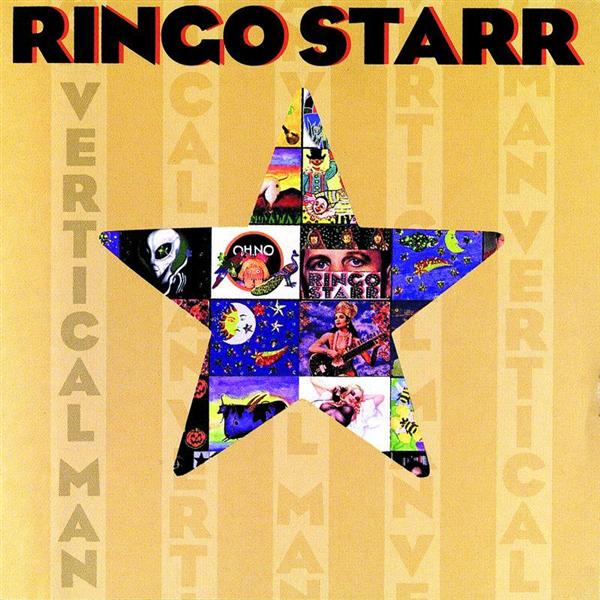
Vertical Man (1998)

1. One 2. What in the...World 3. Mind Field 4. King of Broken Hearts 5. Love Me Do 6. Vertical Man 7. Drift Away 8. I Was Walkin' 9. La De Da 10.Without Understanding 11.I'll Be Fine Anywhere 12.Puppet 13.I'm Yours
That it took six full years to follow up the critical darling Time Takes Time says more about the state of the music industry—and public indifference—than it does about Ringo Starr’s work ethic. During that gap, Ringo remained visible enough through his ever-mutating All-Starr Band live outings, but new studio work? That was another matter. As strong as Time Takes Time was, no one exactly lined up outside record stores for a new Ringo release in the mid-’90s. So when Vertical Man finally arrived in 1998, few were expecting a resurrection. Which makes its ambition—and often, its execution—all the more surprising.
This was, by Ringo standards, an epic. Thirteen tracks, co-writing credits on eleven of them, and a full complement of famous friends lending a hand. The now-standard formula of celebrity cameos returns, but with a twist: this time around, they’re everywhere. Joe Walsh is back. So are Steven Tyler, Alanis Morissette, Tom Petty, even Ozzy Osbourne. But unlike past records, these contributions rarely dominate. Instead, they blur into the record’s broader patchwork—a pop record that nods affectionately toward the past while rarely sounding imprisoned by it.
That said, "vertical" is hardly the word that comes to mind. This record doesn’t so much rise as it wobbles, darting in several directions at once. The most glaring misfire is the cover of Dobie Gray’s Drift Away, a song so familiar that it feels almost untouchable. Ringo brings on a parade of guest voices—Petty, Morissette, Tyler—and the result is less communal celebration than chaotic karaoke. It lacks focus and, more crucially, purpose.
And yet, when the same trick is applied to Love Me Do, it works beautifully. Perhaps because it’s such an unexpected choice—after all, how often does one encounter a Beatles cover of this vintage, especially one sung by the man who wasn’t on the original version? In Ringo’s hands, it becomes something new: charming, slightly nostalgic, and oddly fitting. One begins to imagine this could have been the token Ringo song on an early Beatle album—and it would have worked.
Elsewhere, things settle into a more familiar and welcome groove. Tracks like La De Da, I Was Walkin’, and the standout What in the… World (a song so thoroughly Harrison-esque, one might be forgiven for mistaking it as his) showcase Ringo’s enduring knack for delivering light, melodic pop with a wink and a smile. The closing ballad, I’m Yours, dedicated to his wife, is tender without tipping into sentimentality. One can’t help but recall Good Night from The Beatles (White Album)—another gentle send-off from pop’s most unlikely frontman.
Not everything lands. With this many collaborators, the album occasionally loses shape, drifting into stylistic confusion. But the sheer amount of material—much of it self-penned—makes for a far more satisfying listen than many would have predicted. And while Ringo may never command the critical reverence of his former bandmates, Vertical Man proves, once again, that he’s far more than just the drummer who got lucky. He’s a songwriter, a collaborator, and most importantly, a survivor—with more to say than most were willing to admit.